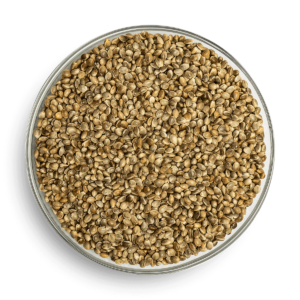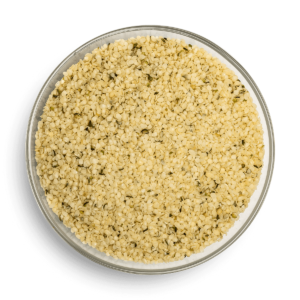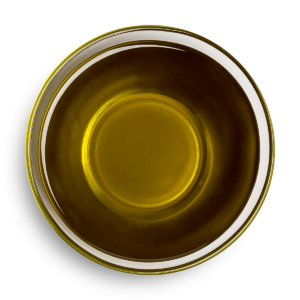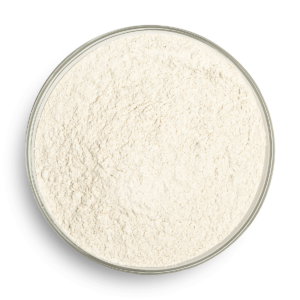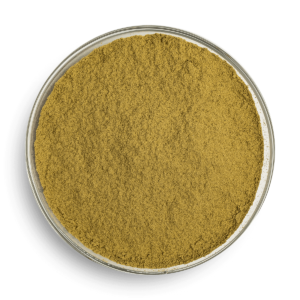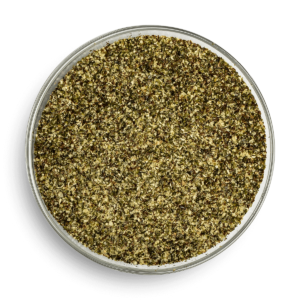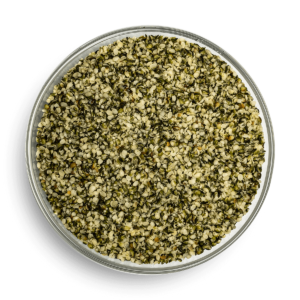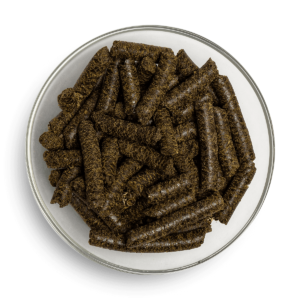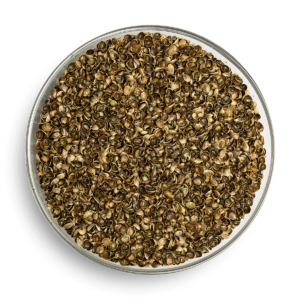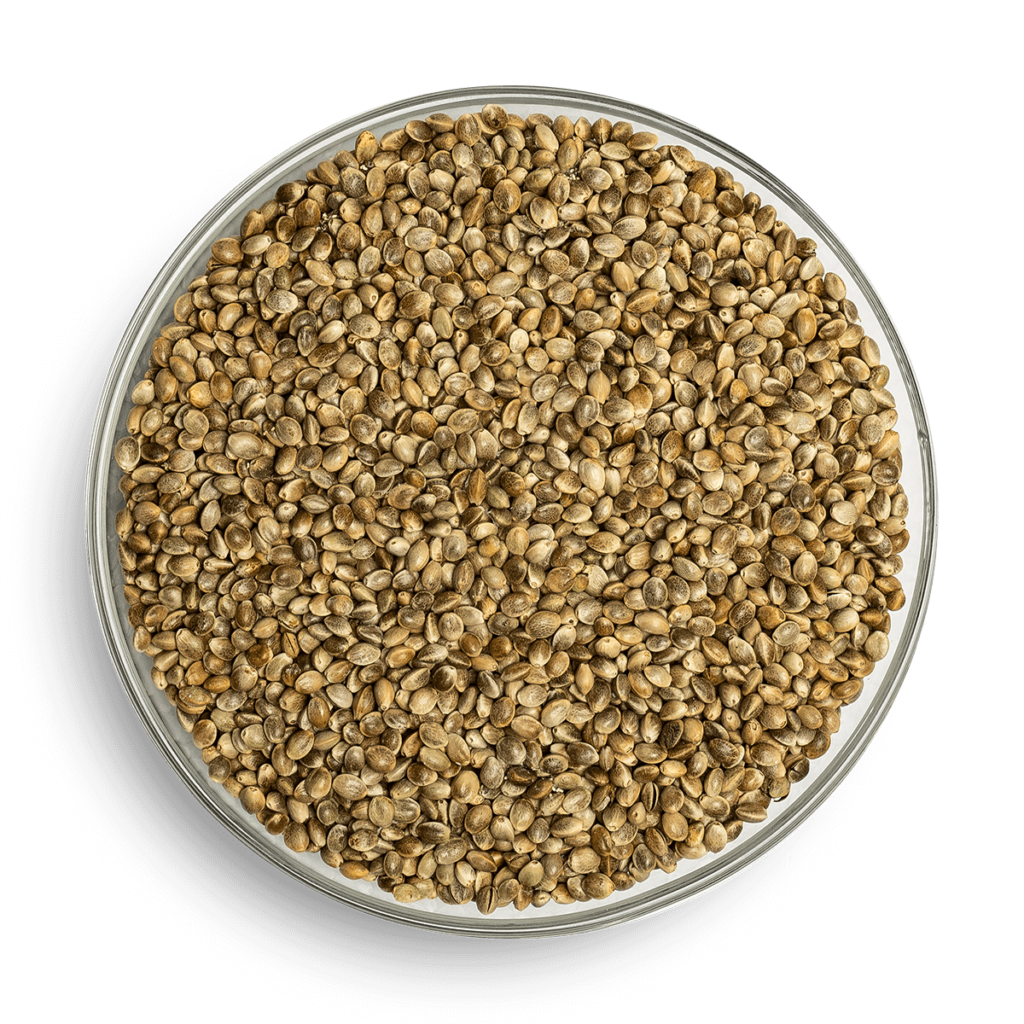
Estica variety sowing seeds
One of the main features of Estica variety is its uniformly large seed resulting in good flavoured oil when pressed.
Plants are dioecious (50% female/50% male). The male and female plants are easily differentiated around 5 weeks after emergence. After pollination, the male plants begin to die, while female seed-bearing plants remain vigorous and green.
Hemp seed oil is valued for human food because of its high content of essential fatty acids (Omega 3, 6 and 9). Hemp seed is a balanced source of protein, essential fatty acids, fibre, vitamins and minerals.
- Good shattering resistance
- Large seed size: 95% is over 3 mm
- High purity
- High yielding
- Very low THC level
- Oil content up to 35 %
- Growing season about 100 days depending on sowing date
- Can be sown in the second half of April – tolerates night frosts Moderate/short plant height
- Seeding rate 120 germinating seeds per 1 m2
- Direct harvesting with conventional harvesters
- Thousand seed weight 18 g
EU approved and registered hemp variety
The new variety was registered for the EU catalogue of plant varieties in December 2021
Field choice
Typically land which produces good rapeseed crops will fit well for oilseed hemp. Fertile land with a loam texture that is rich in organic matter with a pH between 6.0 and 7.2 is preferable. The seedbed should be loose and uniform before sowing – preferably spring ploughing. Avoid soils with low organic matter and poorly drained soils. Fen peat soils also work well with hemp. Drought-tolerant. Volunteer wheat, barley and buckwheat are difficult to clean out, and it is better to avoid such neighbouring. Herbicide and pesticide residues are easily absorbed from the soil, so you might want to avoid fields where they were applied in previous years. Legume breaking is effective in soil fertility improvement. If sown in early spring before the hemp, legumes will be soon outshadowed by hemp and won’t challenge its growth. Legumes, cereals and root crops are good rotation options for hemp. Corn is not recommended as a rotation crop because of shared pests e.g. European corn borer.
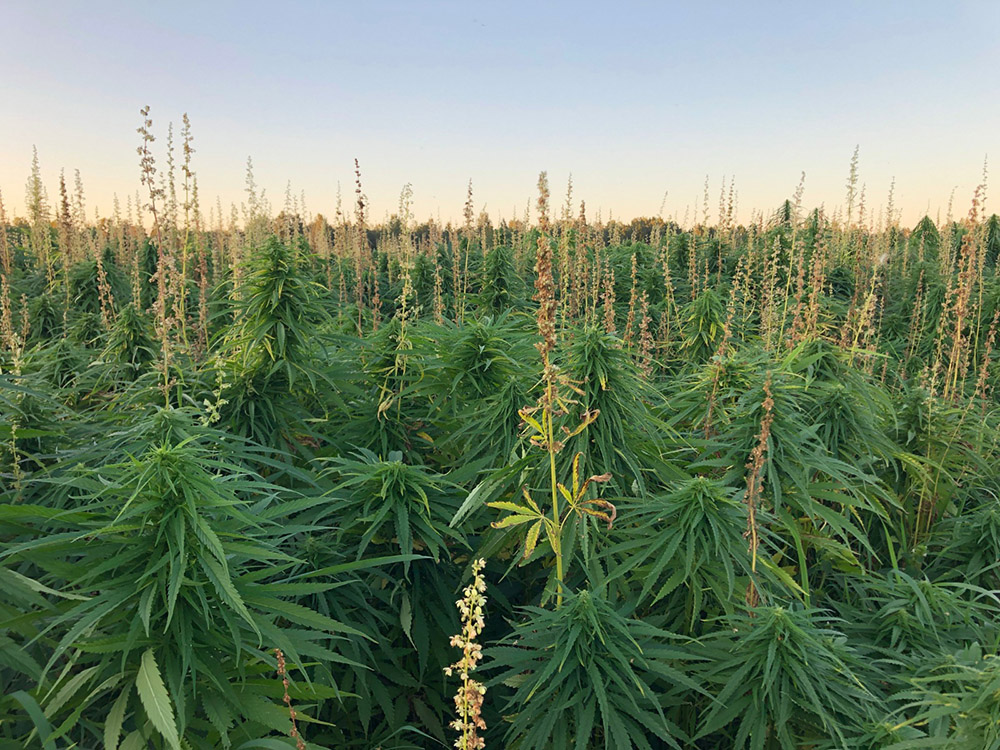
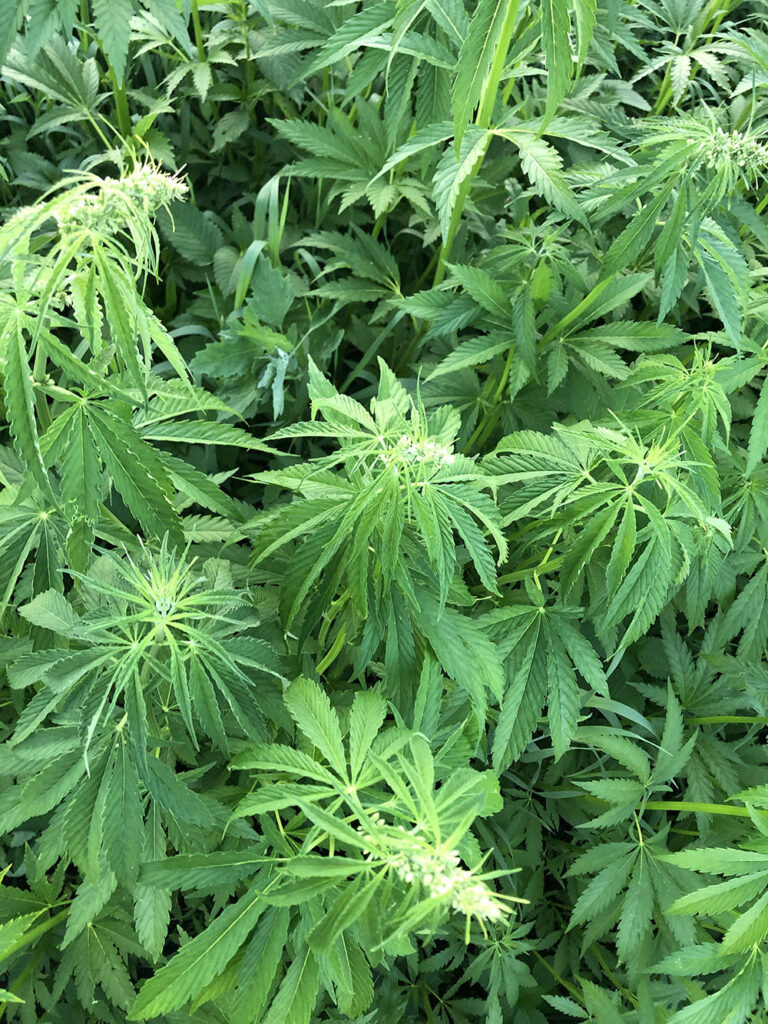
Seeding
Certified pedigreed seed is required for all hemp production. Please keep eti- quettes after sowing for further control. Seed into moist soil at 1 cm depth. Good packing assists in quick crop emergence by increasing soil moisture-to-seed contact. Hemp seeds should germinate com- pletely within 10 days. Younger plants are relatively freeze-tolerant. Recommended seeding rate 120 germinating seeds per 1 m2. Although usually, growers target the last weeks of May, variety freeze-tolerance allows starting with seeding at the last week of April. Warm soils with average temperatures above 5 ̊C promote rapid emergence. Earlier seeding improves the chance of a higher seed yield. It is strongly not recommended to roll the field after seeding.
Fertiliser
Nutrient requirements calculations should be based on the soil balance: expected harvest, soil nutrients, and environment (soil type, moisture, tempera- ture). Excessive nitrogen application is not recommended since it will cause extensive stem growth and will make harvesting more difficult.
Weed management
Perennial weeds should be controlled in the year previous to planting hemp with crop rotation. Potential problem weeds are black-bindweed and common couch.
Harvesting
Mature hemp seeds become greyish brown and resistant to compression. Harvester cleanout prior to harvest is a must. Residual grain in hoppers and cross augers can cause contamination resulting in significant downgrading and product rejection (use vacuums and air hoses for cleanout).
The great advantage of the Estica variety is that its seeds are located compactly around the stem, so the harvester doesn’t have to process stem material too much. Operate header at 70 cm height from the ground.
As with other hemp varieties, attention must be paid to prevent fibre material wrapping combine moving parts.
Storage
High moisture hemp will heat and spoil quickly. For long term storage, store at less than 8% moisture.
It is important to dry hemp down immediately after harvesting with aeration at low temperatures. Any drying options with a heat exchanger would work. Hemp seed should not be exposed to any burning gases and smoke.
Hemp is an oilseed and must be handled and stored similarly to other oilseed crops such as rapeseed and flax.
“We are responsible for the whole chain from growing hemp until our produce hits your table”
(the well-kept secret behind our outrageously high quality)
Quality
We test regularly. We actually even make the first tests of the soil where we plan to grow hemp. Laboratory tests are a daily routine for us, our main goal is to keep the quality as high as possible. That is the only way for us to have successful business relations with demanding customers like baby food manufacturer Hipp. Thanks to our strict quality assurance department, our customers are never disappointed; once we enter a business relationship, it’s unlikely to end because we’re the ones that continue to raise our standards beyond what our competition can offer.
Land
More than 22% of the land in Estonia is organic. We hold fourth place in urban air quality in the world (we know how to care for our environment). Thanks to the clean fresh air and soil our farmers are able to grow the best quality hemp without breaking a sweat. Our farmers grow hemp in more than 4000 ha of land yearly, and keep increasing the size of the fields. Estonia is the 2nd largest hemp grower in Europe.
Raw materials
We are a co-operation of the biggest hemp farmers in Estonia. Since our
experienced farmers have been growing hemp for decades, we have the assurance of raw materials. Simply because they know what they’re doing. That makes our production plans much easier, and we don’t have to put a lot of effort in finding raw materials to process in our factory.

